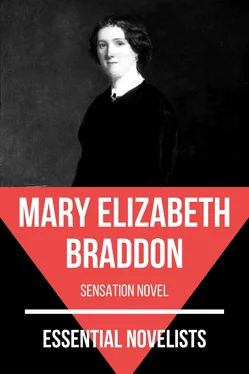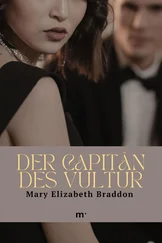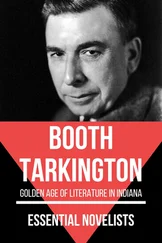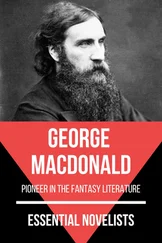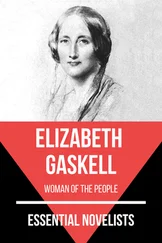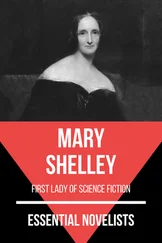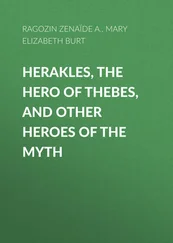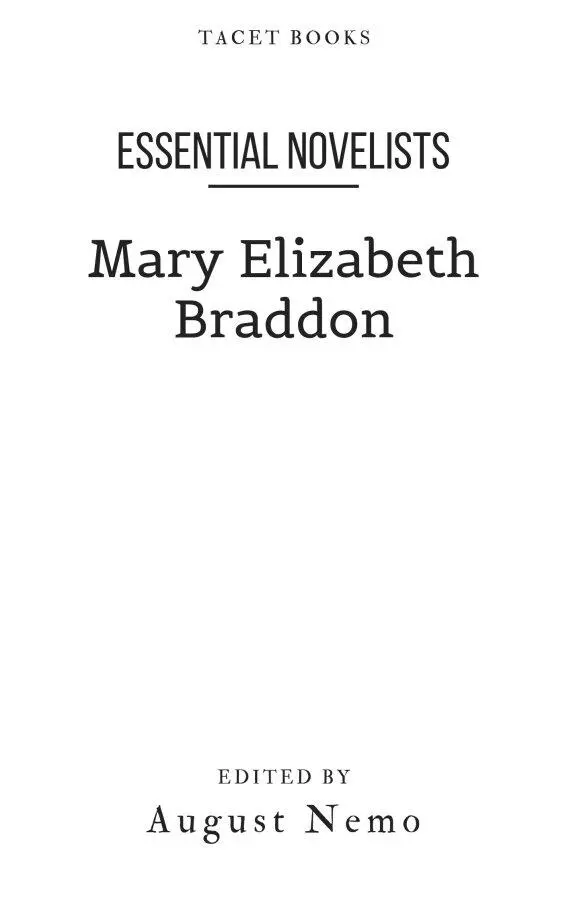
Title Page
Author
Lady Audley's Secret
The Infidel Конец ознакомительного фрагмента. Текст предоставлен ООО «ЛитРес». Прочитайте эту книгу целиком, купив полную легальную версию на ЛитРес. Безопасно оплатить книгу можно банковской картой Visa, MasterCard, Maestro, со счета мобильного телефона, с платежного терминала, в салоне МТС или Связной, через PayPal, WebMoney, Яндекс.Деньги, QIWI Кошелек, бонусными картами или другим удобным Вам способом.
About the Publisher Конец ознакомительного фрагмента. Текст предоставлен ООО «ЛитРес». Прочитайте эту книгу целиком, купив полную легальную версию на ЛитРес. Безопасно оплатить книгу можно банковской картой Visa, MasterCard, Maestro, со счета мобильного телефона, с платежного терминала, в салоне МТС или Связной, через PayPal, WebMoney, Яндекс.Деньги, QIWI Кошелек, бонусными картами или другим удобным Вам способом.

BORN IN LONDON, Mary Elizabeth Braddon was privately educated. Her mother Fanny separated from her father Henry in 1840, when Mary was five. When Mary was ten years old, her brother Edward Braddon left for India and later Australia, where he became Premier of Tasmania. Mary worked as an actress for three years when she was befriended by Clara and Adelaide Biddle. They were only playing minor roles but Braddon was able to support herself and her mother. Adelaide noted that Braddon's interest in acting waned as she took an interest in writing novels.
In 1860, Mary met John Maxwell (1824–1895), a publisher of periodicals. She started living with him in 1861. However, Maxwell was already married with five children, and his wife was living in an asylum in Ireland. Mary acted as stepmother to his children until 1874, when Maxwell's wife died and they were able to get married. She had six children by him.
The eldest daughter was Fanny Margaret Maxwell (1863-1955). Fanny married to the naturalist Edmund Selous on 13 January 1886. In the 1920s they lived in Wyke Castle. In 1923 Fanny founded the local branch of the Woman's Institute. She became the first president. The second eldest son was the novelist William Babington Maxwell (1866-1939).
Mary Elizabeth Braddon died on 4 February 1915 in Richmond (at the time a borough in Surrey, but now part of Greater London), and is interred in Richmond Cemetery. Her home had been Lichfield House in the centre of the town, which was replaced by a block of flats in 1936, Lichfield Court, now listed. She has a plaque in Richmond parish church which calls her simply 'Miss Braddon'. A number of streets in the area are named after characters in her novels – her husband was a property developer in the area.
LUCY.
––––––––
IT LAY DOWN IN A HOLLOW, rich with fine old timber and luxuriant pastures; and you came upon it through an avenue of limes, bordered on either side by meadows, over the high hedges of which the cattle looked inquisitively at you as you passed, wondering, perhaps, what you wanted; for there was no thorough-fare, and unless you were going to the Court you had no business there at all.
At the end of this avenue there was an old arch and a clock tower, with a stupid, bewildering clock, which had only one hand—and which jumped straight from one hour to the next—and was therefore always in extremes. Through this arch you walked straight into the gardens of Audley Court.
A smooth lawn lay before you, dotted with groups of rhododendrons, which grew in more perfection here than anywhere else in the county. To the right there were the kitchen gardens, the fish-pond, and an orchard bordered by a dry moat, and a broken ruin of a wall, in some places thicker than it was high, and everywhere overgrown with trailing ivy, yellow stonecrop, and dark moss. To the left there was a broad graveled walk, down which, years ago, when the place had been a convent, the quiet nuns had walked hand in hand; a wall bordered with espaliers, and shadowed on one side by goodly oaks, which shut out the flat landscape, and circled in the house and gardens with a darkening shelter.
The house faced the arch, and occupied three sides of a quadrangle. It was very old, and very irregular and rambling. The windows were uneven; some small, some large, some with heavy stone mullions and rich stained glass; others with frail lattices that rattled in every breeze; others so modern that they might have been added only yesterday. Great piles of chimneys rose up here and there behind the pointed gables, and seemed as if they were so broken down by age and long service that they must have fallen but for the straggling ivy which, crawling up the walls and trailing even over the roof, wound itself about them and supported them. The principal door was squeezed into a corner of a turret at one angle of the building, as if it were in hiding from dangerous visitors, and wished to keep itself a secret—a noble door for all that—old oak, and studded with great square-headed iron nails, and so thick that the sharp iron knocker struck upon it with a muffled sound, and the visitor rung a clanging bell that dangled in a corner among the ivy, lest the noise of the knocking should never penetrate the stronghold.
A glorious old place. A place that visitors fell in raptures with; feeling a yearning wish to have done with life, and to stay there forever, staring into the cool fish-ponds and counting the bubbles as the roach and carp rose to the surface of the water. A spot in which peace seemed to have taken up her abode, setting her soothing hand on every tree and flower, on the still ponds and quiet alleys, the shady corners of the old-fashioned rooms, the deep window-seats behind the painted glass, the low meadows and the stately avenues—ay, even upon the stagnant well, which, cool and sheltered as all else in the old place, hid itself away in a shrubbery behind the gardens, with an idle handle that was never turned and a lazy rope so rotten that the pail had broken away from it, and had fallen into the water.
A noble place; inside as well as out, a noble place—a house in which you incontinently lost yourself if ever you were so rash as to attempt to penetrate its mysteries alone; a house in which no one room had any sympathy with another, every chamber running off at a tangent into an inner chamber, and through that down some narrow staircase leading to a door which, in its turn, led back into that very part of the house from which you thought yourself the furthest; a house that could never have been planned by any mortal architect, but must have been the handiwork of that good old builder, Time, who, adding a room one year, and knocking down a room another year, toppling down a chimney coeval with the Plantagenets, and setting up one in the style of the Tudors; shaking down a bit of Saxon wall, allowing a Norman arch to stand here; throwing in a row of high narrow windows in the reign of Queen Anne, and joining on a dining-room after the fashion of the time of Hanoverian George I, to a refectory that had been standing since the Conquest, had contrived, in some eleven centuries, to run up such a mansion as was not elsewhere to be met with throughout the county of Essex.
Читать дальше
